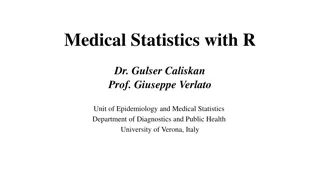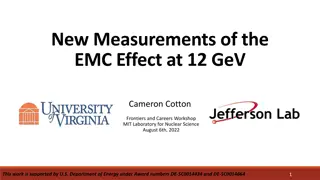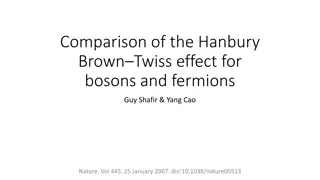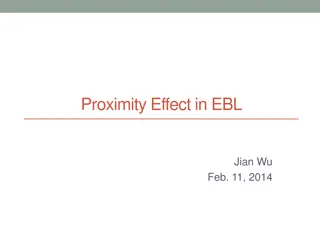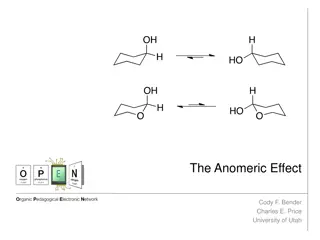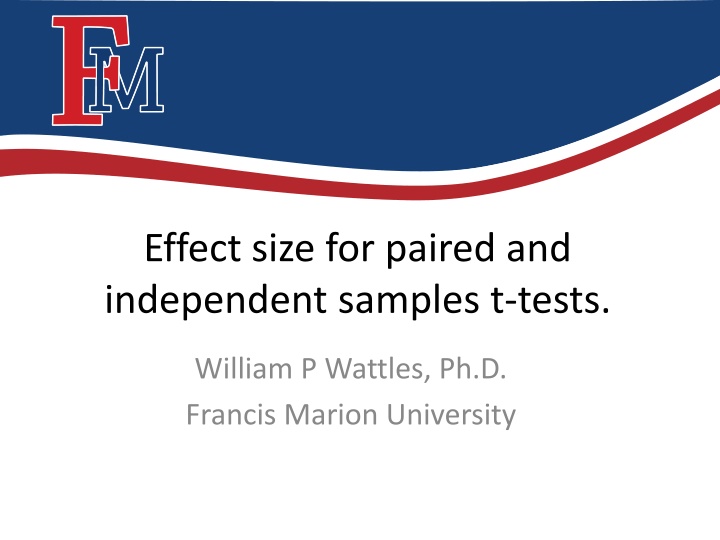
Effect Sizes and Significance in T-Tests
Explore the significance of effect sizes in paired and independent samples t-tests, learn how to interpret statistical significance, and understand the formulas for calculating effect sizes. Discover Cohen's d and how it reflects the difference between means, with insights on matched pairs and independent samples.
Download Presentation

Please find below an Image/Link to download the presentation.
The content on the website is provided AS IS for your information and personal use only. It may not be sold, licensed, or shared on other websites without obtaining consent from the author. If you encounter any issues during the download, it is possible that the publisher has removed the file from their server.
You are allowed to download the files provided on this website for personal or commercial use, subject to the condition that they are used lawfully. All files are the property of their respective owners.
The content on the website is provided AS IS for your information and personal use only. It may not be sold, licensed, or shared on other websites without obtaining consent from the author.
E N D
Presentation Transcript
Effect size for paired and independent samples t-tests. William P Wattles, Ph.D. Francis Marion University
Statistical Significance For both matched pairs and independent samples t-test: Tells us the probability (p-value) that the observed difference between the means occurred by chance. If that probability is low, less than alpha (usually .05), we conclude that it was probably not chance.
The significance test does not tell us if the difference is meaningful, only that it probably did not occur by chance.
Effect size for t-test Tells us the magnitude of the difference between the two means. Nearly all statistical tests have an effect size associated with them.
Effect size for t-test The basic formula is the size of the difference divided by the standard deviation.
Effect size for t-test Paired-sample and independent samples unfortunately have slightly different formulas.
Effect size conventions Cohen s d equals zero when the means are the same and rises as they differ.
Matched Pairs Cohens d d=mean difference/standard deviation. 0.05974 standard deviation -0.03368 mean -0.56378 Cohen's d
Independent Samples Cohens d d=mean difference/standard deviation.







